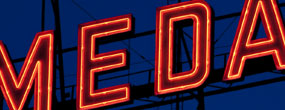-
 How to Think Like a Great Graphic Designer
How to Think Like a Great Graphic Designer- by Debbie Millman
Interviewer extraordinaire, Debbie Millman, talks to 21 designers and the results are thoroughly enlightening. We all love to hear about how other designers work, their processes, and what drives them to want to create; and it’s for those reasons that I really connected with this book. My copy is bursting with marginalia, highlighted passages, and dog-eared pages. Tons of insight from many of our most celebrated and accomplished designers.
 How Designers Think
How Designers Think- by Bryan Lawson
A seminal classic in design theory and practice that breaks down the nature of our engagements with clients and conspirators, process and inspiration. This book will teach you how to design better by thinking better and understanding how the creative process works. Basically, a handbook for how to be a designer.
 Art Direction Explained, At Last!
Art Direction Explained, At Last!- by Steven Heller and Veronique Vienne
Defining “art direction” is a hard enough nut to crack on its own, but teaching it to someone can be a daunting task. It combines so many unknowns, so many gut feelings, and so much intuition, that it’s best learned from seasoned practitioners. Steve Heller and Veronique Vienne, two battle-hardened art directors in their own right, define and discuss just what art direction is and how to capture the best thoughts in your designs. This book compiles their take on the topic, and polls many of the world’s best art directors through case studies and interviews.
 How To Be a Graphic Designer Without Losing Your Soul
How To Be a Graphic Designer Without Losing Your Soul- by Adrian Shaughnessy
This book won’t teach you how to be a graphic designer, but it will teach you how to survive as one. Shaughnessy includes great tips on self-promotion, finding work, managing and maintaining client relationships, and sound advice on some of the philosophical dilemmas designers encounter on the job.
 Designing for People
Designing for People- by Henry Dreyfuss
Written in 1955, Dreyfuss’ book is no less poignant today than it was then. Though Dreyfuss was an industrial designer, his book amounts to a quintessential manual for user centered design and showcases how he pioneered many of the same practices we use today in interaction design.
 What is a Designer: Things, Places, Messages
What is a Designer: Things, Places, Messages- by Norman Potter
A relatively thin volume, with incredibly dense language, on the role of the designer, individually and in the global community. Potter can be harsh and demanding at times in his unwavering views of the design industry and the duties of its members, but this is a rich work with much wisdom to impart. Also includes a good model for a creative process.
 Graphics Artists Guild Handbook: Pricing & Ethical Guidelines
Graphics Artists Guild Handbook: Pricing & Ethical Guidelines- by Graphics Artists Guild
You still wanna be a graphic designer, huh? You fool! If you insist on traversing this slippery slope, at least arm yourself. This is the stuff that they don’t tell you about in school (at least not at my college). Inside you will find very useful information like base pricing guidelines for every type of design work conceivable, information on paper work like invoices and contracts, and information on all of the situations in design and business you don’t see coming. If you plan to do things on your own someday, whether it be freelance or starting your own design business, you really need to start somewhere. By following some helpful tips and guidelines books like this contain, you help other designers too. The point is for everyone to value design (client and designers), by pricing things the general ballpark of what they are worth. Teach your clients what good design is, and what they are buying from you. You help us all from the notion we are graphic decorators.







 Follow me on Twitter
Follow me on Twitter